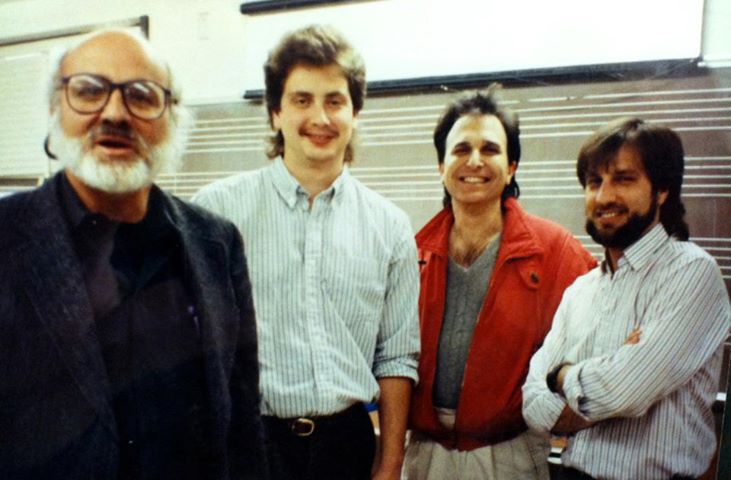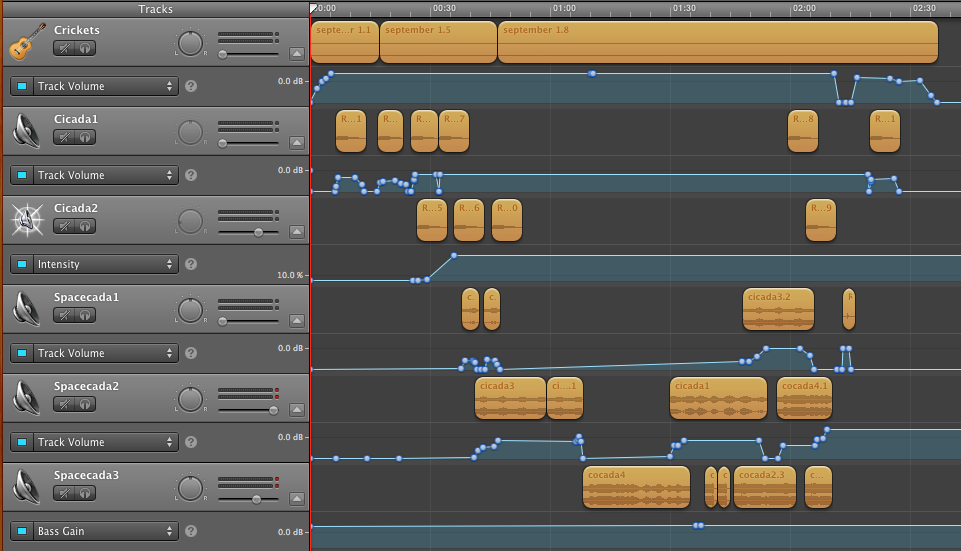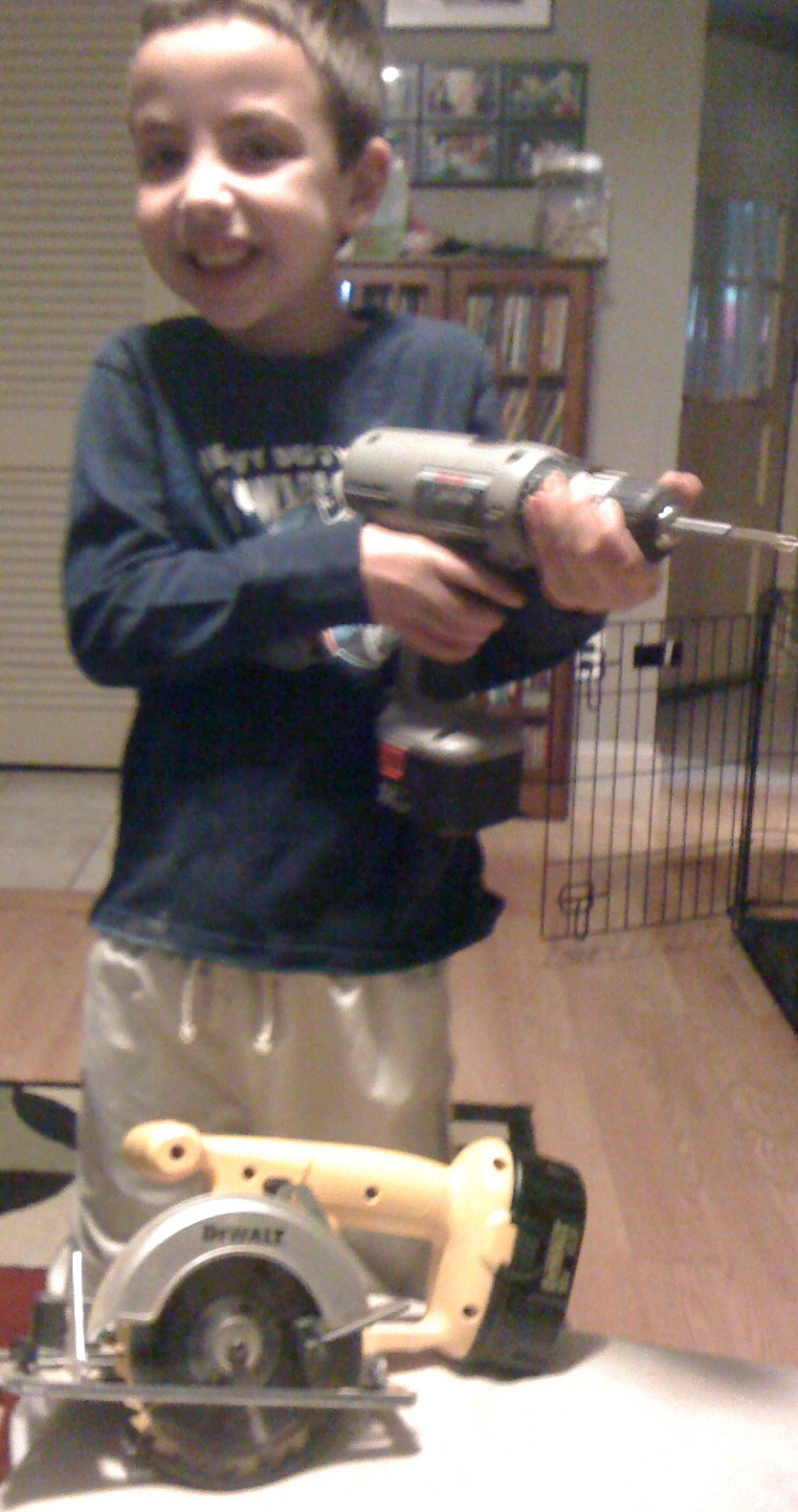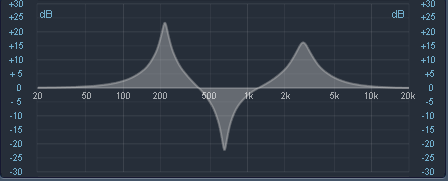Something to Share - a Reflection in Sound
 Monday, November 4, 2013 at 10:26PM
Monday, November 4, 2013 at 10:26PM Well here we are, my latest attempt to jump-start this space.
I have something to share. It comes form a convergence of discussions, workplace-life and reflection over the last couple of months. Its a bit long winded, but there is a prize. ;)
Recently in my Twitter network I got into a discussion with @marklearns around this post regarding the impact of DIY (Do It Yourself) on the creative/artisan and by extension the knowledge workforce. This little discussion was a kind of spark. L-R Morton Subotnick, Me (yes that is a mullet), Burton Beerman (teacher and mentor), Mark Bunce (dear friend, partner in AMP Recordings) 1989 or 90
L-R Morton Subotnick, Me (yes that is a mullet), Burton Beerman (teacher and mentor), Mark Bunce (dear friend, partner in AMP Recordings) 1989 or 90
My background is in music composition, specifically electronic music and music technology. My career path has taken me through teaching music technology and recording techniques at the college level into musical instrument and technology sales (during the first digital disruption of the 90s ADATs, DA88s etc.) to part owner of a multimedia production company and an eLearning specialist to my role now which includes corporate learning and multimedia communication and digital marketing and brand strategy.
Through that journey, my composition fell by the wayside. I think 1999 was the last year I actually sat down and composed/created for sound. I love sound. Always have. I used to stand by the tracks when a freight train rushed by, - the sound washing over me, enveloping me. It was an event - a sound rush…
So, what is this all about, and what does it have to do with the impact of DIY?
In my job over the last few weeks or so, I’ve started to feel like I have been working by rote - going through the motions. I want that to stop that as soon as possible. So I started thinking about a quick project that I could do that engaged me creatively and that I could “put out there” with the vulnerability of a composer - will it connect or fail?
I decided to tip toe back into electronic composition. I wanted to create a little sound story or poem to share.
When I was an active composer, I mostly composed for an event. A live performance with big high-end speakers and live performers in a great space that really pushed some molecules around. Big enveloping sounds experienced communally. I had racks of hardware at my disposal (I sold the majority of my rack gear in 2003, when the kids were born)
Now, usually in my past when I was getting ready to create I would come down with a case of GAS - Gear Acquisition Syndrome. I have to admit that I had to fight off GAS this time. And this is where DIY comes in. I fought off GAS when I read a quote from Frank Filipetti at the AES conference in NY in October (via twitter from @RandyCoppinger as I was unable to attend this year)
“Be really gear agnostic.” “There is no piece of gear that you have to have to make a record.” “It’s not the gear.” There isn’t anything you could buy for even $100 that couldn’t be used to make a great record.”
Well that is great quote and can be applied to all the artisan fields that are effected by and fear the move to DIY. And it helped me frame this little sound project.
Instead of using this as an excuse to go out and get Ableton or Logic with a bunch of new virtual instruments or even hooking up with iRig gear, I decided to create my sound story with just my iPhone and the apps that were currently on it and Garage Band. My phone and Garage Band have nearly if not more synthesis, sampling and recording power than my old rack of gear that included and EMU sampler, a K2000s controlled with a Wavesation EX and WX7 (still have those 2) and several racked effects processors. How's that for DIY disruption (and progress frankly).
The Sound Poem
I have a fair amount of trees in my yard compared to the rest of my street. On my birthday September 1, the 17 year cicada’s winding down their call and response combined with the usual song of crickets chirping really created a sound piece all its own. I went out and sat down and let the sound wash over me. I noticed sometimes though that the stress of the daily grind would come creeping into the peace attained by the sound trance. The sound would waiver and become mechanized and horrific until I could collect my thoughts and relax again.
I wanted to capture that in my piece. So I decided to start recording the sound environment with my iPhone. I manipulated the sounds I recorded with an app I already had on my iPhone, Moog’s Filtatron. I transferred the sounds to my computer and shaped the piece using Garage Band.
To me, this piece wants to be a 6 - 10 minute ambient piece, multi channel played over high end speakers loudly - cuz that’s how I like to experience pieces like this. But this time out I needed to make it short enough so you would listen to the whole piece - most likely on your mobile device. I attempted to master it so that it tells the story effectively through basic ear buds. I strongly encourage you to listen to it on full range headphones. Admittedly it does not work well over mobile device speakers or computer speakers. I offer it as a free download with Creative Commons share with attribution. So, with all this talk I fear it will disappoint. But here it is. Cicada Drift.
Process
The recording app I used is Fire, which has been acquired and is now distributed by Rode Microphones. The app provides an FTP to share recordings. I recorded 3 minutes of ambient crickets and several “close ups’ of cicadas in the yard. You can hear me walking around.
Filtatron has a feature that lets you import sounds to use as samples. I imported both the crickets and the cicada recordings and used them for sound sources to which the resonance filter was applied and used as a control source for filters and oscillators. The app allows you to record your output on the phone and export via FTP.
 On the left is the Fire app. A great app I've had on my phone for years dating back to my 3Gs. The rest are screen caps of the Filtatron app, which I love and my wife can't stand, mostly because I tinker with it at times I probably shouldn't.I created a number of sounds to use as the colors for my canvas. Garage Band was the canvas. I brought all the sounds in to Grage Band and listened to each of them all the way through. It took some getting used to Garage Band’s limitations but ultimately the automation of volume, pan and the effects on each track really works pretty well.
On the left is the Fire app. A great app I've had on my phone for years dating back to my 3Gs. The rest are screen caps of the Filtatron app, which I love and my wife can't stand, mostly because I tinker with it at times I probably shouldn't.I created a number of sounds to use as the colors for my canvas. Garage Band was the canvas. I brought all the sounds in to Grage Band and listened to each of them all the way through. It took some getting used to Garage Band’s limitations but ultimately the automation of volume, pan and the effects on each track really works pretty well.






